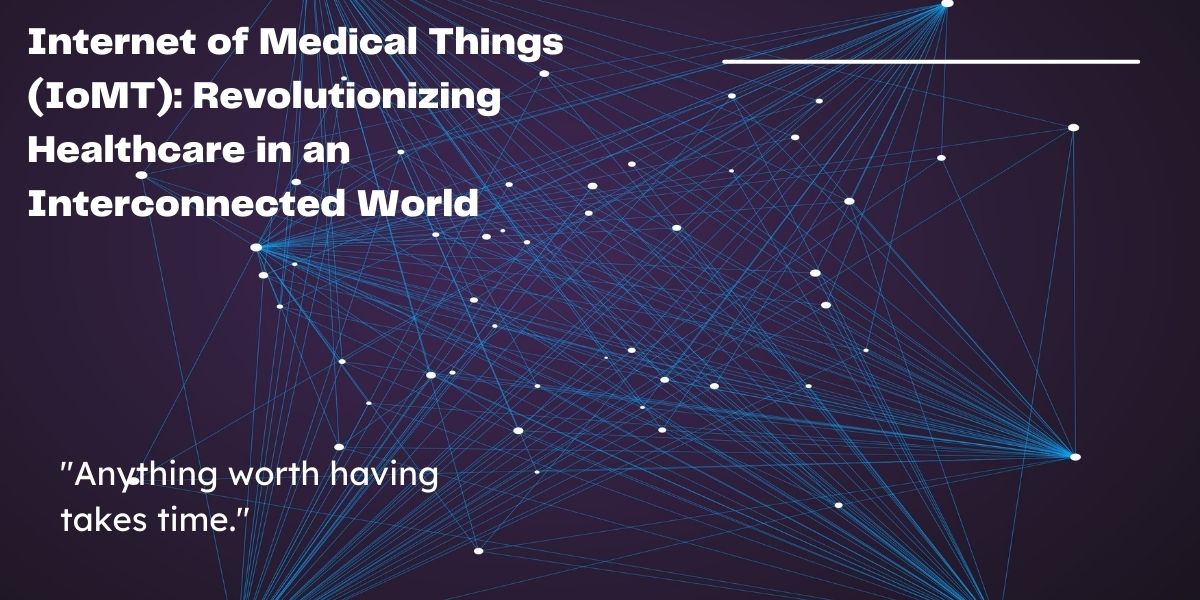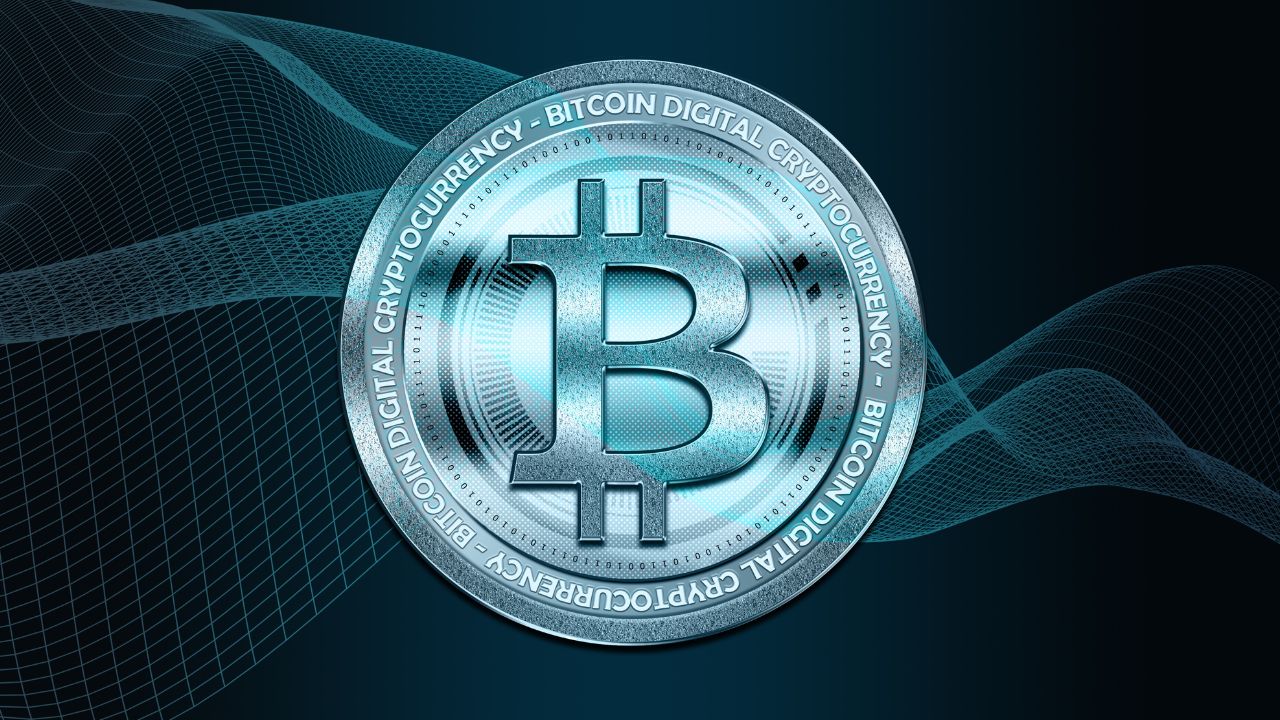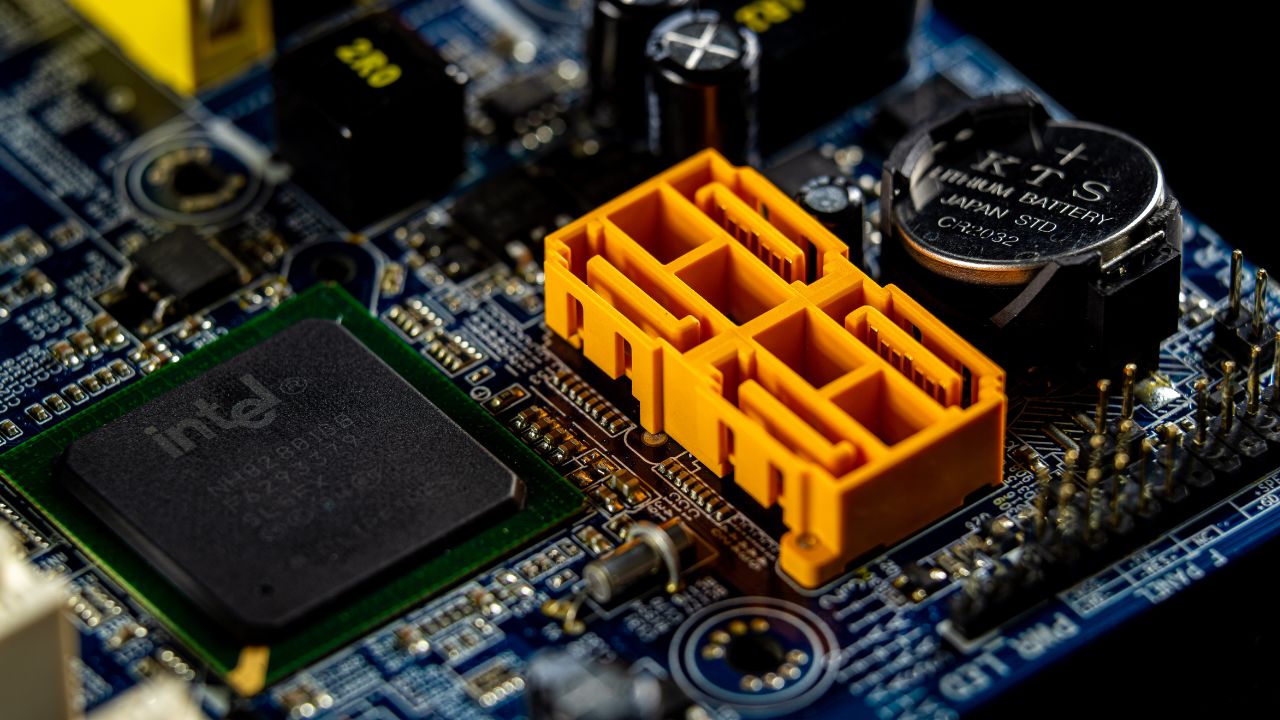Internet of Medical Things (IoMT): Revolutionizing Healthcare in an Interconnected World

Internet of Medical Things (IoMT) I Source:https://www.linkedin.com
In the large healthcare innovation, a transformative force is emerging, which brings with it the potential to revolutionize patient care, enhance diagnostics, and reshape the way medical treatment is delivered.
Internet of Medical Things (IoMT)
The advanced technology and healthcare, IoMT represent a groundbreaking paradigm that leverages the power of connectivity, data, and intelligent devices to create a seamless ecosystem of interconnected medical solutions.
In this article, we will know about the journey to explore the complex web of IoMT, its transformative capabilities, the magnitude of its impact, and the future it holds for patient care.
- Complexity Exposed: Unraveling the IoMT Enigma Amidst the intricacies of IoMT lays a technological marvel that belies the confusion.
By connecting a complex web of medical devices and state-of-the-art sensors, IoMT empowers healthcare providers with real-time data collection, analysis, and actionable insights. The resulting complexity entails a multidimensional paradigm, revolutionizing diagnosis, treatment, and patient monitoring.
- Bursting with possibilities: A multitude of applications the IoMT landscape explodes with a kaleidoscope of applications, demonstrating its transformative potential across diverse healthcare sectors.
From wearable health trackers and smart implants to remote patient monitoring and telemedicine, IoMT introduces innovation that redefines patient-centered care, blurs geographic boundaries, and enables personalized healthcare experiences.
- The Dynamic Tapestry: Interconnectivity and Integration At the core of the burstiness of IoT is its ability to weave a dynamic tapestry of interconnected devices and systems.
Medical sensors communicate seamlessly with electronic health records, cloud platforms, and AI algorithms, facilitating real-time collaboration, data sharing, and decision support. This complex interplay drives the intensity of IoMT, paving the way for data-driven, proactive healthcare interventions.
- Baffling Challenges: Navigating Complexity with Accuracy While the explosion of IoMT promises a transformative future, it also presents formidable challenges.
The complexities surrounding interoperability, data security, privacy, and regulatory compliance emerge as complex obstacles that demand careful attention.
The rapidity of IoMT calls for comprehensive strategies, a robust governance framework, and continuous innovation to overcome these barriers and ensure its seamless integration into the healthcare ecosystem.
- Unveiling the Future: The Evolutionary Trajectory of IoMT As we look into the future of IoMT, a captivating tapestry of possibilities unfolds before us.
The ever-evolving intensity of IoMT is set to drive advancements such as AI-assisted diagnostics, remote surgery, smart hospitals, and predictive healthcare analytics.
Furthermore, IOMT’s convergence with other emerging technologies, including AI, blockchain, and 5G, amplifies its transformative potential, promising a future where healthcare remains, and patient outcomes are revolutionized.

An ecosystem of Internet of Medical Things (IoMT) I Source: https://www.researchgate.net/figure
Conclusion
The Internet of Medical Things (IoMT) has emerged as a surprising and explosive force that is set to revolutionize healthcare in an interconnected world.
Its complexity combines with its transformative applications, enabling real-time data analysis, personalized care, and remote monitoring.
However, meeting the challenges and embracing the tremendousness of IoMT is key to harnessing its full potential.
As IoMT evolves, the tapestry it weaves promises to redefine healthcare, empower providers, and ultimately improve patient outcomes in ways never before imagined.
FREQUENTLY ASKED QUESTION (FAQ)
Question 1. In which of the following ways the Internet of Medical Things (IOMT) has been used during the pandemic?
- Remote Patient Monitoring: IoMT devices, such as wearable health trackers and connected medical devices have enabled remote patient monitoring.
- Rapid data collection and analysis: IoMT devices have played a vital role in collecting real-time data related to COVID-19 symptoms, such as temperature, heart rate, and respiratory patterns.
This data is analyzed to identify possible cases, monitor disease progression, and support early intervention measures.
- Supply Chain Management: Optimize supply chain management for m using IoMT Medical equipment and supplies.
Using connected sensors and inventory management systems, healthcare facilities are able to monitor stock levels, track usage, and facilitate timely replenishment to meet increased demand during the pandemic.
- Smart Monitoring of Quarantine and Isolation: IoMT technologies have been employed to monitor individuals in quarantine or isolation.
Connected devices and digital applications have allowed healthcare providers to remotely monitor compliance with isolation protocols, track symptoms, and provide timely interventions when necessary.
- Enhanced communication and collaboration: IoMT has improved communication and collaboration among healthcare professionals, allowing real-time sharing of patient data, medical images, and test results.
This has facilitated faster and more accurate decision-making, especially in critical care scenarios.
- Health surveillance and contact tracing: IoMT has been used in health surveillance efforts and contact tracing initiatives.
Connected devices and mobile applications have helped track and trace potential COVID-19 exposures, identify hotspots, and inform public health interventions.
Question 2. What is IoMT used for?
- Remote Patient Monitoring: IoMT enables remote patient monitoring by connecting medical devices and sensors to collect and transmit patient data on a real-time basis.
This allows healthcare providers to remotely monitor patients’ vital signs, chronic conditions, and overall health, reducing the need for repeated in-person visits and enabling timely intervention.
- Telemedicine and Virtual Consultation: IoMT facilitates telemedicine and virtual consultation, allowing patients to receive medical advice, diagnosis, and treatment remotely.
Through video conferencing, secure communication platforms, and connected devices, healthcare professionals can remotely assess patients, provide guidance and prescribe medications.
- Chronic Disease Management: IoMT plays an important role in the management of chronic diseases like diabetes, heart conditions, and respiratory disorders.
Connected devices such as glucose monitors, smart inhalers, and wearable trackers enable continuous monitoring of vital parameters, medication adherence, and lifestyle management, empowering patients to take active control of their health.
- Medication Management: IoMT helps in medication management by providing reminders, tracking compliance, and automating the medication delivery system.
- Healthcare Asset Management: IoMT helps healthcare facilities streamline asset management by using connected sensors and tracking systems.
It enables monitoring and tracking of medical equipment, supplies, and inventory levels, optimizing resource allocation, reducing waste, and ensuring efficient operations.
- Advanced-Data Analysis and Research: IoMT generates a huge amount of data that can be analyzed to derive valuable insights.
By leveraging advanced analytics, machine learning, and AI algorithms, IoMT supports clinical research, population health analysis, and the development of predictive models for disease management and public health interventions.
- Emergency Response and Disaster Management: IoMT helps in emergency response and disaster management scenarios.
Connected devices and communication systems facilitate rapid information sharing, situational awareness, and coordination among healthcare providers, emergency services, and public health officials during a crisis.
Question 3. What is an example of an IoMT device?
An example of an IoMT device is a smart insulin pen. Smart insulin pens are connected devices that assist individuals with diabetes in managing their insulin injections.
These pens are equipped with sensors and wireless connectivity, allowing them to collect and transmit data related to insulin dosage and injection timing.
Smart insulin pens typically have a display or a companion mobile application that enables users to input dosage information. The pen records the dose, time, and date of each injection, giving patients a digital log of their insulin use.
The collected data can be synchronized with a smartphone app or cloud-based platform, allowing healthcare providers or individuals to access and analyze the information.
This data can be valuable for tracking insulin adherence, identifying patterns in glucose control, and making informed adjustments to treatment plans.
By leveraging connectivity, smart insulin pens provide benefits such as dose tracking, reminders for missed injections, and the ability to share data with healthcare professionals.
It can increase medication adherence, facilitate remote monitoring by healthcare providers, and enable personalized diabetes management.
Smart insulin pens exemplify how IoMT devices contribute to the management of chronic conditions by integrating technology into everyday medical devices.










